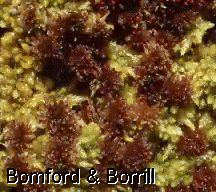
| |
 |
![]()
 From Usenet Archives:
From Usenet Archives:
- This is one of those a friend told a friend of mine stories so I don't know if it is true. Maybe someone else out there has heard of this. I guess during some major war (Civil War I believe) troops ran out of sterile dressings. They used sphagnum moss and the wounds healed faster than with sterile dressings.
- Jeff Stevens
- I recollect that sphagnum was being harvested in Scotland during the Hitler war for possible use as a dressing. Dried sphagnum is highly absorbent and was intended for use as a dressing material instead of scarce cotton wool. A thick layer of sphagnum in a bed is a practical help in nocturnal enuresis.
- Alexander Maclennan
[email protected]- Not sure if this counts, but at archaeological sites in the arctic we would wrap organic artifacts in sphagnum moss that grew in the damp areas around ponds (though we were told by botanists that it was not *technically* sphagnum, but a relative). This kept the artifacts moist because drying too quickly can cause cracking and damage. It was also a cheap (free, actually) packing material, did a good job of protecting the artifacts in transport and was supposed to prohibit the growth of fungus and bacteria. Whether that was an attribute of real sphagnum, our faux-sphagnum, or our imaginations I can't say.
- Tim Rast